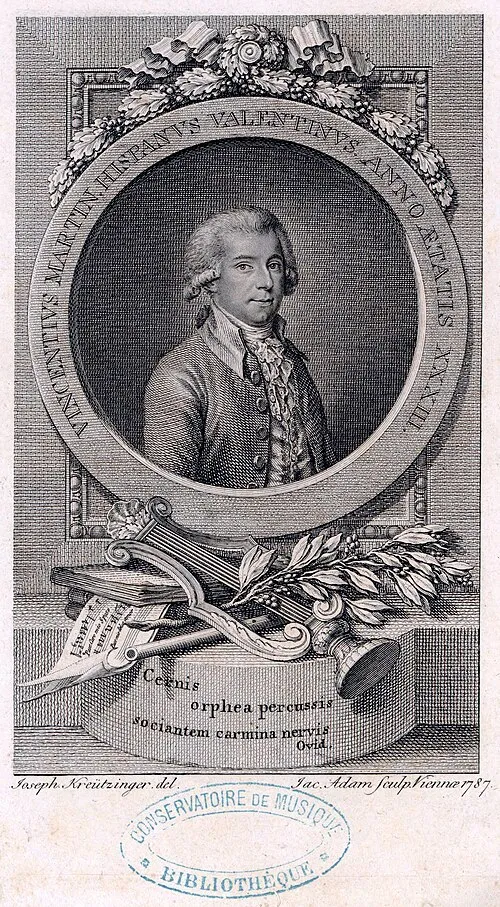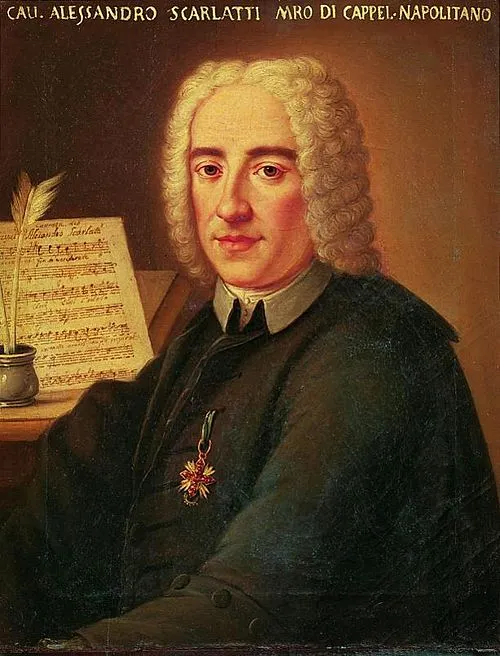
Full Name: Vicente Martín y Soler
Birth Year: 1754
Nationality: Spanish
Profession: Composer
Death Year: 1806
Vicente Martín y Soler: The Composer Who Danced Through Time
In the vibrant heart of 18th-century Spain, a child was born in 1754 who would dance through the annals of classical music history. Vicente Martín y Soler emerged into a world bursting with cultural transformations and burgeoning artistic expressions. Perhaps it was fate that led him to compose symphonies and operas, echoing the melodies of his soul amidst the fervor of Enlightenment ideals.
However, early on, young Vicente faced challenges. His family struggled to make ends meet in a society that often overlooked artistic aspirations. Despite this hardship, he found solace in music crafting melodies that seemed to rise from his very spirit like smoke from an unquenchable fire. By the time he turned ten, he had begun his formal education at a local cathedral school where the sounds of choral harmonies filled his ears.
The pivotal moment arrived when Vicente decided to pursue formal training under renowned composers. Ironically, it was during this period of intense study that he discovered his unique voice a fusion of traditional Spanish elements with influences from Italian opera and French ballet styles.
Notable Works and Influence
Among his most famous works is the opera Il burbero di buon cuore, composed in 1786, which exemplifies his skill for incorporating lively melodies and engaging drama into his compositions. His partnership with the renowned librettist Lorenzo Da Ponte, who is best known for his work with Mozart, showcased a remarkable synergy that delighted audiences across Europe.
Martín y Soler’s operas often featured charming arias and intricate ensembles, reflecting the vibrant culture of the time. He was known for his ability to create captivating musical narratives that engaged both the heart and mind, making him a beloved figure in the operatic world.
Legacy and Recognition
Although his fame waned after his death in 1806 in Paris, Martín y Soler's works saw a revival in the late 20th century as scholars began to rediscover the treasures of early Spanish opera. His contributions have since been celebrated in concerts and recordings, ensuring that his legacy continues to thrive.
The unique blend of Spanish and Italian musical styles found in Martín y Soler’s works paved the way for future composers who sought to break boundaries and innovate within the operatic form. His ability to convey emotion and tell stories through music remains an inspiration for composers and performers alike.
From Madrid to Vienna: A Journey through Music
By the late 1770s, as Europe began shifting under revolutionary ideals and political intrigue, Vicente made a bold move; he left Spain for Italy where musical innovation flourished. Who knows what dreams danced in his mind as he traveled across borders? In Venice’s lively salons filled with exuberant laughter and sophisticated chatter, Vicente caught the ear and heart of audiences with his vibrant compositions.
He began composing for operas and gained notoriety for works like "Una cosa rara," which premiered in 1777 at La Fenice Theatre. This opera blended humor with heartfelt drama a testament to Vicente's ability to capture human emotions with remarkable precision. Critics hailed him as one of Italy's finest composers! And yet... even amid success, one could argue that Vincente never forgot his Spanish roots his music retained an unmistakable flavor reminiscent of flamenco rhythms.
The Height of His Career
The next chapter unfolded when King Charles III invited him back to Spain as court composer! Imagine standing before royalty the audience rapturous as they welcomed back their beloved son who had grown wise beyond years spent abroad! He enchanted them once again while composing "La guerra de los mundos," showcasing not only musical prowess but also brilliant theatricality that captured audiences’ imaginations during performances.
However fate had different plans; political winds shifted dramatically during this time: Napoleon’s invasion sparked turmoil throughout Europe affecting all aspects including art & culture. Ironically enough... while many artists fled or faded into obscurity amid chaos Vicente stood firm! His resilience shone bright; despite external upheavals affecting creative industries alike…he continued crafting new pieces reflecting contemporary struggles while invoking nostalgia through vivid traditional motifs!
A Legacy Carved Out Amidst Chaos
The year 1806 marked both an ending and beginning for this remarkable composer whose life intertwined seamlessly within fluctuating historical tides it was then when Martín y Soler passed away at age fifty-two leaving behind an impressive catalog showcasing diverse genres ranging from operatic works steeped heavily within Spanish folklore themes paired gracefully alongside delicate Italian romanticism!
"Music is like love: A simple idea but it can fill your soul!"
A Reflection on Time: His Influence Today
- Mozart's Rival: Notably recognized by contemporaries such as Wolfgang Amadeus Mozart who respected him deeply - evidence shows collaboration traces hint towards mutual admiration existing between these two great minds even if ironically seldom acknowledged over centuries!
- Cultural Resurgence: Fast forward centuries later the world begins rediscovering gems long tucked away gathering dust and surprisingly… modern productions resurrect compositions revealing depth hidden beneath classical notation previously overlooked by many generations!


